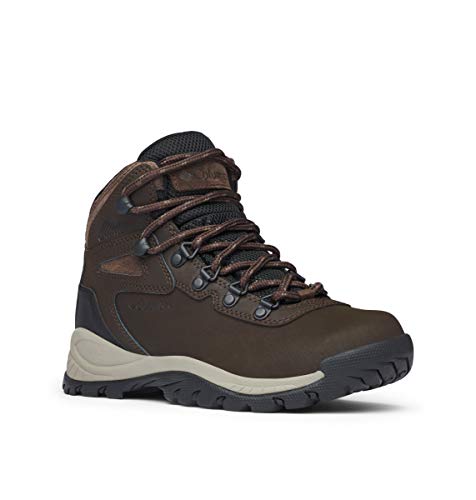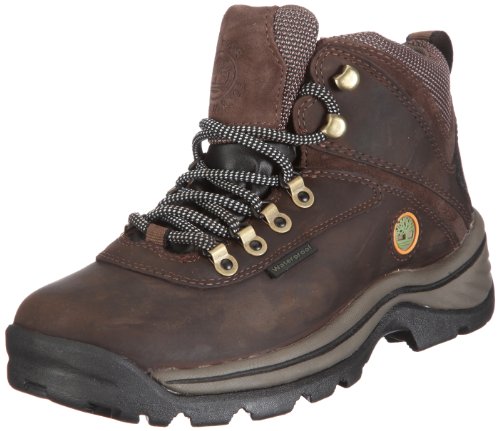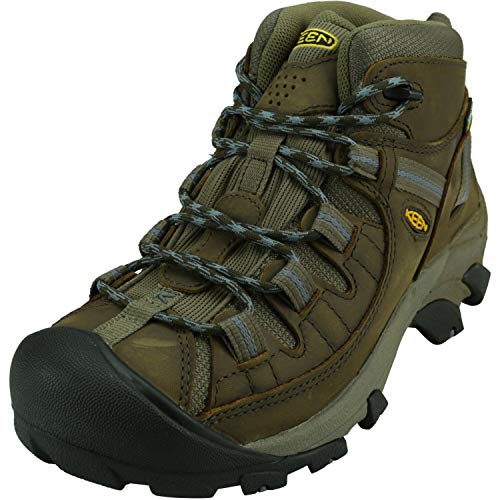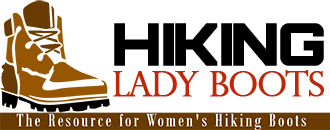The Best Women’s Hiking Boots for Bunions
Have you ever stopped from hiking because your toes felt pinched, irritated, compressed? Did some blisters make your hiking experience miserable, and you couldn’t hike for days after that? It’s common for people with wide feet to encounter these kinds of problems.
There’s a solution for this, no worries. It would help if you found boots that are sufficiently wide in the toe box so that your feet have enough room in the front.
Top 5 Women’s Hiking Boots for Bunions
1. Columbia Women’s Newton Ridge Plus-Wide Hiking Boot
An excellent and economical product for all of you hikers out there struggling with bunions is Columbia Women’s Newton Ridge Plus-Wide Hiking Boot.

See reviews and pricing on Amazon
- The boots are made of leather.
- They’re waterproof and have mesh bootie build.
- They’re adjustable and have to cushion
- They’re dependable and provide stability and traction
- They don’t make the best choice for summer
- You may give them some time until they break in completely
Made from leather, with a rubber sole, this boot is specifically built wide, so that toes won’t get stranded and suffer when hiking.
Waterproof and breathable at the same time, it’s a sure thing that no drop of water or sweat will increase the chances of bunions, since no moisture will wet your feet.
The nylon stability shank and the Omni-grip non-marking rubber outsole will help you when your trails get rocky and rugged. Therefore, no sore toes, no bunions in the end.
The boots come with extended-lasting and lightweight midsole, proper padding, and high energy return. The advanced traction rubber sole will reduce the risk of slipping and keep you stable on tough ground. In winter, the dual-zone winter tread pattern will help you move, even if there’s ice or snow on your trails.
After breaking in the boots, the comfort will be impressive. The full-grain leather up gets softer the more you wear the boots, and the mesh bootie build keeps your foot snug while hiking. The mesh tongue will help with the ventilation.
Don’t forget to use the lacing for finding the best fit for the boots. The soft mesh exterior is both functional (it helps with breathability) and aesthetic, as it makes a pleasant contrast with the leather.
Priced under $100, these boots will save not only your feet from bunions but also your pocket.
2. Timberland Women’s White Ledge Mid Ankle Boot
It’s not ideal to go shopping on a thin wallet, but it doesn’t mean that you’ll go back home empty-handed. The Timberland Women’s White Ledge Mid Ankle Boot may not come with all the bells and whistles of high-end hiking boots, but they tick most essential boxes within the category.

See reviews and pricing on Amazon
- The boots are made with waterproof leather.
- They have a large toe box and thick soles for better stability
- The traction is adequate on various surfaces
- The boots come with shock-absorbing padding and thick gusseted tongue
- The style could be improved
- Some think that the footwear runs small
The first thing to notice is the leather build, which will provide comfortable wear right out of the box. Many hikers put the boots on right after taking them out of the box. They’re waterproof boots so that they will take wear on a wet trail too. It’s a premium waterproof leather for the upper part of the boots with the seam-sealed build for the footwear’s waterproofness ability.
The build is made with comfort to mind, and the padded tongue and collar increase that level of comfort. It’s an entirely gusseted tongue, blocking debris from coming inside the boots while improving the comfort.
The EVA footbed is also cushioned, so your feet won’t feel the pointy rocks on trails. The dual-density EVA midsole ensures lightweight padding, reducing the efforts of your feet throughout your hikes.
As we’ve mentioned, the boots check most quality boxes within the category, and traction is one of them. The rubber lug outsole provides adequate traction on various terrains.
The toe box is complete, and hikers with bunions will find the boots protective for their foot issues. The boots are trail-ready and give the ruggedness you look in long-lasting hiking footwear.
Should you be looking for durable, tough, waterproof, and reliable boots for your bunions, these boots will make a safe buy on any given day.
3. KEEN Women’s Targhee II MID WP-W,
Some manufacturers don’t need an introduction as they have already discovered the keys to making great hiking boots. So it is for Keen, and the KEEN Women’s Targhee II MID WP-W,, makes a trustworthy choice for hiker women with bunions.

See reviews and pricing on Amazon
- The boots are made with waterproof leather.
- The toe box is roomy, but the boots have a contoured heel lock.
- The grip and traction are efficient.
- The boots feel comfortable and stable on various trails.
- The soles could be more durable.
- The boots could use more padding.
The boots are made with 100% waterproof nubuck leather, which means no water will get inside the footwear. It also means that the footwear will become softer and more comfortable in time. Unlike many leather boots, they don’t need much time to break-in.
Thanks to Keen technology, waterproofness doesn’t make the boots less breathable. The ventilation is adequate, and the footwear won’t make you sweat, not even in the summer. The KeenDry waterproof and breathable membrane are genuinely useful.
Traction is essential for hiking boots, and the ESS shank of the boots gives torsion stability on all surfaces. The boots are tough enough to take a rocky trail, but flexible enough so that your hiking remains pleasant. The multi-directional lugs make the boots reliable and stable on both dry and wet trails.
The EVA foam midsole is compression-molded for a better fit, and the complete toe box solves the bunion issue. The boots have a smart design, so the heel cup isn’t vast, which keeps the foot in place and provides support for the ankles. It’s a contoured heel lock, so the toes feel comfortable, whereas the heel stays in place all day long.
As for the looks, we notice the subtle yellow Keen label on the tongue and the side of the upper part, making a nice contrast with the brown color of the leather.
As long as you remain focused on the goods, you should take the leap of faith with the boots, especially if you have bunions.
4. Hanwag Alta Bunion Boot – Women’s
If you’re willing to pay the extra buck, you should expect great features and comfort for your hiking boots. The Hanwag Alta Bunion Boot – Women’s come with a price that may throw some hikers off, but the fact that they’re designed for women with bunions makes them a strong competitor within the category.

See reviews and pricing on Amazon
- They’re made especially for hikers with bunions.
- The leather is waterproof and gets softer with each use.
- The stability and traction are impressive.
- The boots are roomy and comfortable to lace for the best fit.
- Some believe that the boots work best in day hikes, and not backpacking.
- They’re not cheap
The boots are made with waterproof leather and may require some break-in period. The build is all that matters as the footwear provides extra room for your bunions, without sacrificing the stability or ankle support. They’re very well made, and the padded collar will keep your heel in place and ankle snugged throughout the day.
The soft leather lining doesn’t have any seams at the big toe joint, and this detail counts for protecting the bunion. The rubbing on the bunion is significantly reduced, thanks to the soft leather feature.
The boots come with deep pull lacing for a firm yet comfortable fit at the heel. Clamping lace hooks at the top of the upper will offer the snug fit you want for ankle support. Many hikers may not be aware of it, but stability for ankle and heel in the boot keeps the foot in place, reducing the bunion and pain’s irritation.
Shock absorbency is crucial when hiking, as the terrain is challenging, rocky, and various. The second shock absorber in the heel and shock-absorbing inserts in the outsole (right at the ball of your foot) make the boots safe for most difficult hiking.
The Vibram soles will give the padding and the traction you need while hiking, even on wet, icy, or gravely surfaces.
Hikers can also use their orthopedics with the boots, without compromising the overall performance of the boots.
All in all, the boots have numerous features that will make hikers with bunions happy on a hike, so it’s all about how much money you’re willing to pay for that level of comfort.
5. Asolo Stynger Gore-Tex Hiking Boot – Women’s
For the determined hikers who don’t mind paying the high dollar for long-lasting boots, the Asolo Stynger Gore-Tex Hiking Boot – Women’s is one significant investment to make.

See reviews and pricing on Amazon
- The boots work all-year-round
- They’re comfortable from the first wear.
- The toe box is complete, and the toe cap is rubberized for protection.
- The boots ensure stability, traction, and comfortable wear.
- They’re pricey
- Some have a stiff feeling in the beginning.
The boots are made with fabric and suede, which is why they’re comfortable to wear right after opening the box. The toe box is complete, and the TPU rubber toe will protect your bunions. Good hiking boots will let you get the best fit with the lacing system, and these boots sure don’t make an exception. It’s a classic lace-up system with durable laces and metal hardware for a safe and comfortable fit.
No worries about getting your feet wet as the boots come with Gore-Tex Extended Comfort lining, blocking water and elements from entering the boots. Many features explain comfortable to wear, and the Lite 2 anatomic footbed will take your foot’s shape for continuous support and comfort. Let’s not forget to mention the Mono-density midsole, which also helps with the support, but also ensures shock absorbency. The Asolo Syncro outsole is made with a rubber-PU combination for a longer lifespan, whereas the self-cleaning lugs will give you traction, no matter how the trails are.
The boots are water-resistant, and both the suede and the high-tenacity nylon upper will take splashes.
As for the looks, the boots check the box too. They have feminine shape, with beautifully colored details that seal the deal for many.
Even if the boots aren’t perfect, they are a great model for women hikers with bunions who only care about performance, reliability, and looks when hiking.
How should you select your hiking boots for bunions?
It only takes a quick look at the hiking boots market to see that the diversity and number of options are impressive. However, some features will make the boots more appropriate for bunions, so keep reading to find out the details.
Generous toe box
The toe box is the area where your toes will stay. If it’s spacious, the toes will feel comfortable, especially if you’re planning a day hike. Your toes will have enough room for moving around, without cramping. A large toe box also gives balance, as they have a larger platform, which also improves support.
A large toe box with depth is essential for people with bunions. If the toe box is large, the toes won’t be squished nor pressured, so they will not make your bunions feel even worse.
Typically, reliable hiking boots feature large toe boxes, whereas others provide large models and the regular width model. Some boots are made for people with wide feet, and make an excellent choice for people with bunions.
Soft material for the upper part
Even if many people stay away from leather, thinking that it needs a lot of time to break-in, it’s typically the best option for hiking boots. Of course, there’s various leather quality, and good leather boots will be ready to wear right out of the box. They will require little to no break-in period, as the leather is soft and doesn’t put any pressure on your bunions.
But soft leather isn’t going to be enough for soft protection of your bunions. You also want an excellent and stretchable material underneath the leather to complete comfort and safety.
Effective support
If your hiking boots have efficient supports, they will reduce the significant toe pressure, alleviating any pain from the bunions. Hiking boots providing proper arch support will spread the weight evenly, and not focus on the big toe and your bunion.
Hiking boots that come with easy to remove footbed also make the right choice for women with bunions. Some use orthotics, and it’s easier to insert them if the footbed is removable.
A fair amount of padding
Your hiking boots should have some padding, but only in the right places. You don’t want the boots to be bulky as your toes will feel cramped, and your bunions will start to hurt again.
They’re great for hiking.
It’s useless to get great boots for your bunions but fail when it comes to hiking performance. Many features make hiking boots reliable for hiking, with the rugged and waterproof build as essential. Adequate traction on all surfaces, grippy soles, good ankle support, breathability, and adjustable fit will make your hiking boots work better, allowing you to enjoy your hike.
Boots that don’t rub or cause pressure points or hot spots are great for any hiker, especially hikers with feet problems such as bunions.
Faqs
Q: What’s the simple definition of a bunion?
A: The bunion is a lump at the big toe’s joint, created when tissue or bone at the toe’s bottom shifts away. Pressure on the joint and weird motion cause bunions. Unless you’re wearing the proper boots or shoes, the bunions will cause a lot of pain and discomfort whenever you’re walking. Hiking is impossible, for the obvious reasons.
Q: Is the bunionette the same thing as the bunion?
A: Also named the tailor’s bunion, the bunionette forms outside of your foot, right at the little toe’s base. Bunionettes cause the same problems like bunions and become painful when not wearing the proper pair of shoes.
Q: Do women develop bunions more often than men? Why?
A: Women wear high heels a lot, which makes them prone to develop bunions. The pointed-toe shoes are the worst design for feet, but women willingly pay the price for being trendy, as we all know.
Q: Why do men develop bunions?
A: Poorly fitted footwear is one of the leading causes of bunions in men. Later in life, men wear somewhat loose safety boots, which can also cause bunions. They may not give the same attention to bunions as women do, but they will feel the difference when wearing the proper hiking boots.
Q: Are bunions hereditary?
A: Weird enough, bunions are genetic too, so parents may transmit them to their children. If parents deal with bunions, they should address the problem with their kids from an early age. Finding the proper pair of boots in childhood may reduce the risk of developing bunions later in life.
Q: How do you know that you’re about to have a bunion?
A: Bunions don’t develop overnight, and it all starts with the toe joint aching and turning red. Your toes could be all cramped in the wrong shoes, so moving forward is limited. The big toe will be pushed backward or sideways every step you take, causing distortion or bending. The effect appears because your toes don’t have enough room for moving.
Q: Will orthotics work in hiking boots?
A: Some people develop bunions from an early age, and they end up using orthotics for aligning the big toe in the right place. Even if the orthotics work, you still need your hiking boots to be roomy enough (or have removable footbed) to accommodate them. Orthotics give the best results at young ages, as the feet are still growing.
Q: Do bunions get worse with age?
A: If bunions are formed later in life, the problem will only aggravate health conditions (arthritis and rheumatism) affecting the area. The boots you’re using may not work for your bunions, so buying better hiking boots for bunions is the only solution.


